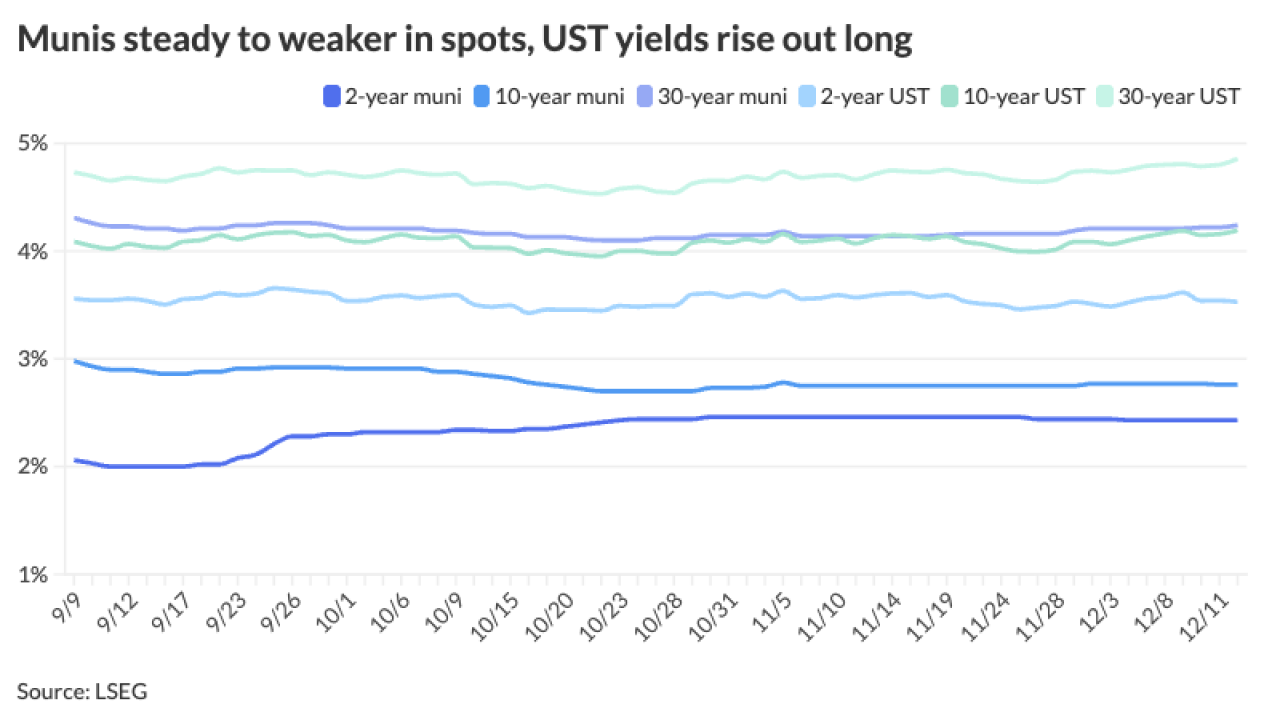SACRAMENTO, Calif. — The challenges of fixing America’s deteriorating infrastructure and making it more resilient to the effects of extreme weather and climate change underscore the need for a more robust green bond market.
That's the argument made in a

“In California alone, we face a funding gap of over $400 billion over the next 10 years to address our state’s infrastructure needs,” Chiang said in a keynote speech at Milken’s California Policy Summit.
The proposal calls for a California program that would be a model to encourage environment-friendly projects and tackle the nation's infrastructure backlog.
“Green bonds are a financing tool that can help replace our existing infrastructure with greener, carbon-free alternatives," Chiang said. "This report not only contains concrete and actionable recommendations that could make a thriving green market a reality, but which could also help us make great strides in the fight against climate change.”
Unlike traditional fixed-income securities, Chiang said, green bonds offer the assurance that the funds will be used to enhance sustainability.
Chiang criticized President Donald Trump for actions like turning his back on the Paris Agreement for global climate standards.
"You won’t stand in our way, Mr. President, because we don’t need you — you can shut down EPA and silence scientists, or turn back the clock on emission standards — but we can now finance the changes that must occur without you. Green bonds can pay for clean and green transportation and new water systems," Chiang said. "California will lead the way."
Constraints to the wider use of green bonds include a lack of standardization and the difficulty of listing them on indexes tracked by large investors, according to the report. Expanding the market will require policy changes and new approaches in financial markets.
"Green bonds are attractive to a wide range of investors, including many who have a sustainable or socially responsible mandate," according to the report. "This has broadened the market, attracting a more diverse investor base than that of a standard issuance."
The joint report grew out of a two-day Green Bond Symposium
Chiang sees the push as a way to tackle climate change and the state’s backlog of infrastructure projects.
“Estimates of what it will take to update America’s infrastructure and make it more resilient and greener in the face of the worsening effects of climate change are as high as $4 trillion,” Chiang said in the report. “In California, just the costs of protecting the state’s drinking water supply over the next 20 years will be at least $44.5 billion.”

Dubbed a Responsible Issuer Program, this state initiative would provide municipalities with guidelines on how to issue a green bond, while standardizing definitions, industry performance metrics, and the process through which projects could be validated and reviewed. The program would also educate issuers about how to structure transactions and how to ensure easy and accurate disclosures.
Among the issues in growing a more robust green bond market in the U.S. are that the lack of volume in the green bond market has led to a virtually nonexistent secondary market for the bonds, according to the report.
California and New York issued a combined $4 billion in green bonds in 2017, however, Chiang said.
The City of Los Angeles and the California Infrastructure and Economic Development Bank have both issued bonds in excess of $400 million to fund improvements to water and sewer systems. The San Francisco Bay Area Rapid Transit District issued $384.7 million in green bonds to beef up its public transportation network, while the San Francisco Public Utilities Commission has issued multiple series of green bonds, with proceeds focused on clean water and renewable energy.
In addition to establishing the Responsible Issuer program, the report also recommends creating both a green bond insurance program to help debt-averse municipalities, and a green bond bank. It advocates taxable green bonds to increase yields and aggregating smaller issuances to attract larger investors.
Chiang and Milken say in the report that they hope growth in green bond issuance in California will act as a catalyst for the rest of the country.
“It takes an innovative collaboration between policymakers and the financial markets to streamline and grow the green bond market,” Caitlin MacLean, Milken Institute senior director for innovative finance, said in a statement. “Because California is widely recognized as a leader in environmental sustainability, pioneering efforts here can serve as a model for other states and countries.”





